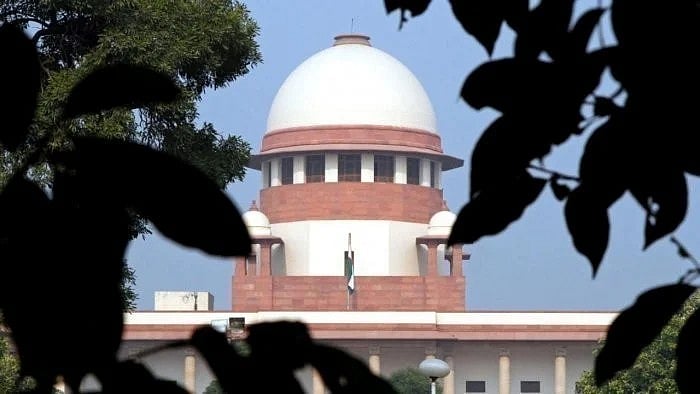
The Supreme Court of India.
Credit: PTI File Photo
Bengaluru: The state government has violated Wildlife (Protection) Act as well as Supreme Court orders in clearing a proposal to reduce the extent of Shettihalli Wildlife Sanctuary in Shivamogga, while the National Board of Wildlife (NBWL) has failed to ensure that denotification of 300 sq km of sanctuary is compensated.
Over the last two decades, the state government had approached the Centre seeking reduction of the sanctuary’s extent from 695.608. The government argued that the final notification for the sanctuary erroneously increased its extent to 695.60 sq km from the actual 395.60 sq km as mentioned in the November 23, 1974 initial notification. After getting the NBWL approval, the state Cabinet on July 17, approved the proposal to shrink the sanctuary.
The reduction was dressed up in terms like “re-notifying boundaries” and “rationalisation of the sanctuary”. However, both the state and the Centre failed to follow the procedure and violated the Supreme Court order that says “no de-reservation of forests/sanctuaries/national parks shall be effected” pending its orders in Writ Petition 337 of 1995.
The state government has also omitted the fact that the original notification dated November 23, 1974 was issued under Section 18 of the Wildlife Protection Act. The rule under the Act insists on the “limits” or boundary of the sanctuary, specifically roads, rivers, ridges and landmark boundaries.
The boundary described in the 1974 notification was more than the conservative estimate of 695 sq km.
In fact, according to the Shettihalli boundary rationalisation committee, it is more than 824 sq km.
The notified forest within the described boundary itself is about 420 sq km.
Sources in the department acknowledged the matter. “There was a need change the boundary to exclude Shivamogga city and other developed areas from the sanctuary. However, equal extent of land should be compensated. Also, going by Section 18, this is a clear act of denotification and should have required prior permission of the apex court,” the source said.
Encroachers rule roost
Interestingly, the then deputy commissioner in a letter dated February 4, 1976 had stated that no objections had been received from the public to the original notification, thereby paving the way for declaring it as a sanctuary as confirmed in the final order of January 1977.
Moreover, the Supreme Court has repeatedly upheld that boundary prevails over the extent, especially when there is discordance over the latter. The forest department has made use of this Supreme Court order in various cases to recover forests, including 18 acres recovered in Bengaluru’s Turahalli in 2017.
At the National Board of Wildlife (NBWL) meeting, member H S Singh had noted that “for reduction of area, equivalent other area (300 sq km) should be added to the sanctuary”. However, the matter was overlooked as the Board agreed for reduction of boundary by accepting the addition of 28.75 sq km of forest area to Bhadra Tiger Reserve.
DH reached out to the chief wildlife warden and additional principal chief conservator of forests (wildlife) but could not get a response. An official said the area mentioned in the notification overrides the boundary.
Bad precedent
Manohar Kumar, president of the Green Lives Shimoga Trust, said the government’s move was a grave violation of the law and the Supreme Court orders. “This will set a very bad precedent, leading to denotification of protected areas. This will benefit vested interests,” he said.
To a question, Forest, Ecology and Environment Minister Eshwar B Khandre said the government will relook into the matter. “We were given a report stating that the NBWL has approved our proposal. If there are problems, we will examine them,” he said.